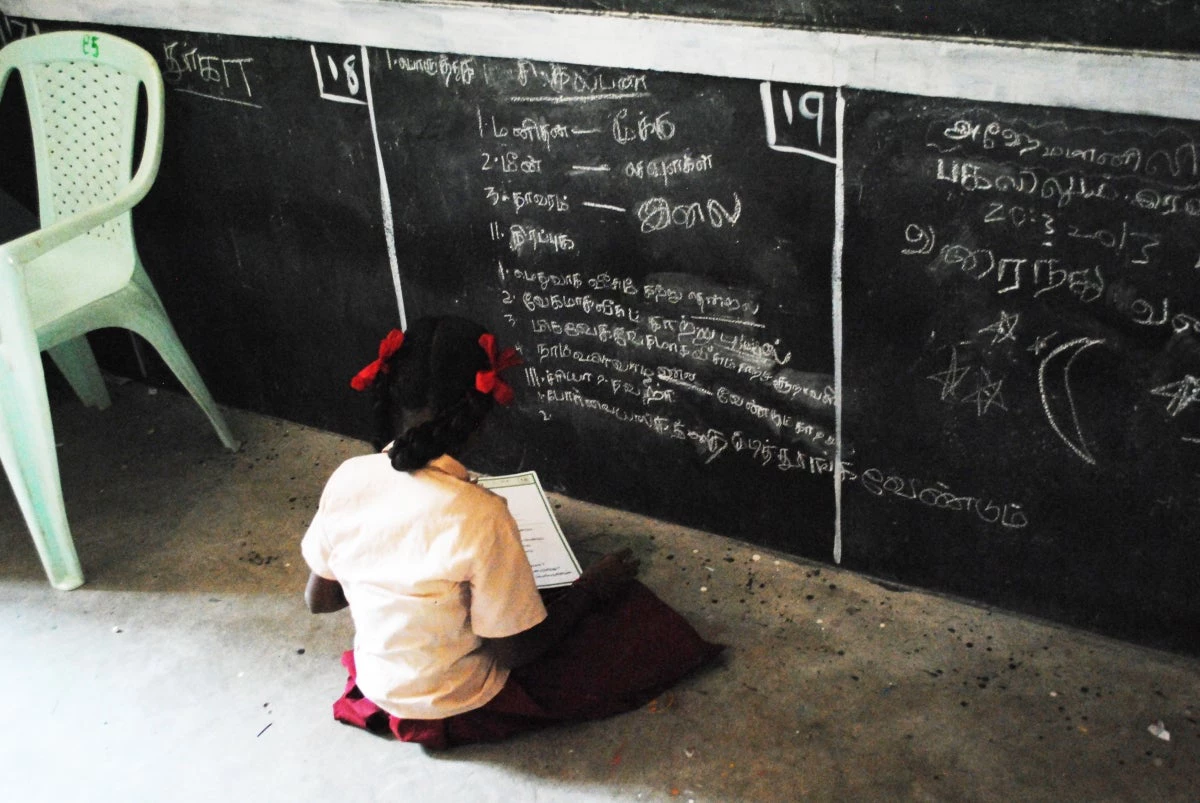In a recent trip to India I had the opportunity to visit schools in Tamil Nadu and observe the application of a new teaching approach in government schools. The Activity Based Learning (ABL) approach is a teaching technique in which learning is accomplished through activities, rather than through the traditional rote teaching we often observe in many schools across the developing world.
These government schools are serving mostly disadvantaged children. In the schools we visited, a majority of students are classified as scheduled casts/scheduled tribes. The infrastructure is basic -in one school children were working in the dark because the electricity was out - a regular occurrence in many schools in Tamil Nadu. Yet, there was significant learning going on.
We saw children reading, writing, doing math, and speaking in English. We saw critical thinking in the use of ‘mind maps’ to interpret texts. Equally important, we saw happy, engaged children who were not afraid to speak up and interact with us and other visitors on an equal footing. The teaching approach appears to have achieved a very unique transformation: a less hierarchical relationship between adults and children. The fact that blackboards are controlled by the children instead of by the teacher represents a strong metaphor for this change.
This active pedagogy is both extremely flexible (to allow each student to advance at her own pace with a focus in meeting learning goals) and very structured. Milestones are transparently set and students (and teachers) can track progress on a regular basis.
I kept asking myself why the standard problems in India of teacher absenteeism and lack of motivation appear to be less of an issue here than in other parts of the country. The reason is not clear, but some people I spoke with suggested that there could be a link to the relatively recent introduction of a policy whereby teachers are hired on the basis of examinations.
Still, it’s risky to draw conclusions from visits to just a few schools. According to the Quality of Education in Rural India (QuERI) project by the Center for Policy Research (CPR, September 2011) Tamil Nadu is a top performer in the country in terms of learning outcomes. However, we really don’t know what may be the contributions of the ABL approach. A recent evaluation of the program found positive results but had serious methodological limitations.
This set of photographs illustrates the dynamics of what is happening in the classroom.
Interestingly, schools are collecting incredibly rich data on student performance. For each student, teachers track the achievement of the forty-plus milestones in each of the areas of the curriculum. Right now, this data is kept in paper form. I could not resist considering the potential of a system that would digitalize that information and create a unified database that could be used for analytical purposes, including experimenting with changes in implementation at the classroom level. We could all learn valuable lessons from such effort.



Join the Conversation